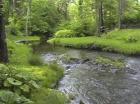
Purple Martin Pages
![]() Requirements for martins
Requirements for martins
![]() The Martin Bio
Page
The Martin Bio
Page![]() The Habits
Page
The Habits
Page![]() Tips to
Attract Them
Tips to
Attract Them
![]() Nest
Checks
Nest
Checks
![]() T-14
Mounting
T-14
Mounting![]() Purple Martin
Housing
Purple Martin
Housing
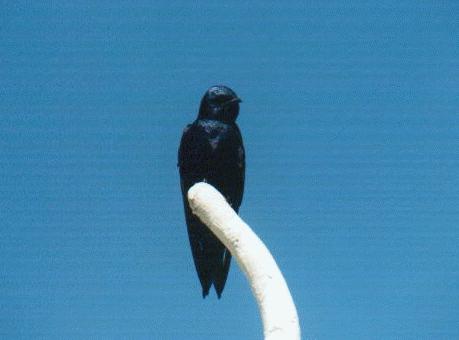 PROGNE SUBISakaThe Purple Martin
The mature
male Purple Martin is a beautiful bird, easily recognizable, fully
cloaked in black feathers. His back, neck and chest feathers have a
steel blue iridescence which can look purple when sitting in the
proper light. The tail and wing feathers are duller in
coloring and do not have this iridescence. Only the mature
males have all black feathers over their entire bodies.
Immature males do not attain the full black body dress until they
are in their second breeding year. The females do not have
entire bodies of black and never attain this solid black look.
Instead, they are much duller than the males and always have a
grayish mottled belly. See the photo series below for a
clearer understanding of the plumage of these birds.
Purple Martins are the largest member of the swallow
family with mature birds measuring up to 8 inches long. Most of this
length is due to their extremely well developed wings, the tips of
which often reach beyond the ends of their tails. They are master
fliers which probably accounts for their superb wing development.
They have a short, flat, triangular shaped bill which is ideal for
catching insects while on the wing. Reproduction
Martins are gregarious in nature and prefer to nest in 'condo' units. These supplied houses usually have more than 6 individual cavities to start with and often have as many as 20 or even 30 cavities in each house. Although it's sometimes difficult to get a colony started, once established, the colony will grow year after year as long as there are nests available to them. Colonies of 300 nesting pairs are not unheard of, although the norm is more like 6 to 10 nesting pairs in the average established site.
Martins usually build a haphazard nest using sticks, twigs, bits of straw, pine needles, leaves or whatever's available. In the back of the nest they form a bowl and lay from 3 to 7 soft white eggs with the norm being 4 or 6. Immature birds usually lay from 2 to 5 eggs while the more mature birds usually lay from 4 to 7.
One thing of note, in the smaller cavities, martins often use mud to make a dam just inside the entrance hole. It is not readily known why they build these mud dams, but it's thought they might be for protection, either from enemies or to keep the elements out. These mud dams are usually not present in larger cavities where there is ample room.
Incubation lasts from 15 to 17 days, with the female doing most if not all the work. The young are born without feathers and take about 28 days to fledge, or leave the nest. The young may return to the nest for a few nights, after which they will start spending their time with the adults. The adults will continue to feed the young until they have acquired enough skill to catch their own food. Nesting
Martins
are cavity nesting birds. In the wild they search out nesting sites
in holes of trees, cliffs and man made structures. Over the years
man has learned to provides nesting sites for them and the martins
use these houses to raise their young. Likewise, martins have
learned through what is called 'generational imprinting', to seek
out these man made structures. In the Eastern U.S., martins almost
exclusively use man made housing. Martins have a very strong "site
tenacity" and if are successful in raising a brood, will often
return to the same site to nest year after year. 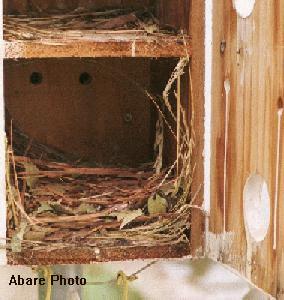
Diet
For the most part, insects make up the majority of the martins diet. They often can be seen on early morning and late afternoon thermals, dipping and diving, snatching insects out of the air. Insects on the menu are ants, beetles, butterflies, damselflies, dragonflies, mayflies, moths, stinkbugs, wasps, a few houseflies and maybe one or two mosquitoes. Out of all of these, their favorite food is probably the dragonfly. During year end nest cleaning, the compartments are littered with dragonfly wings and skeleton parts.
Long Standing Myth
One myth about martins is that they consume thousands of mosquitoes each day. Not true according to studies done on the diets of martins. Mosquitoes make up less than 3% of the martins diet. If you stop and use a little common sense, this can be figured out on your own. Martins feed high in the air, sometimes as high as 300 or 400 feet, while at the same time, mosquitoes usually stay within 15 to 20 feet of the ground where it's moist, therefore, the two seldom cross paths. Now, if a mosquito happens to be in the path of a martin, the martin will take it, but I doubt the martin will go looking exclusively for them. And besides, the amount of energy spent in gathering mosquitoes would far out way the nutritional benefits and also, if you stop to think about it, mosquitoes become most active at dusk, about the same time martins and other birds go to bed.
Water Requirements
Martins,
as all the rest of the swallow family, drink and bathe on the wing,
therefore a good fresh water supply is required somewhat
nearby. This water source could be within 2 miles of the
site. This means either a lake or pond of some sort or an open
stream or river. Although it has been noted that martins will
use a large swimming pool for a quick dip or drink, they will not
use a source such as a bird bath. Martins will not land to
drink or bathe, Habits
For a more detailed description of the daily habits of purple martins, go to the Habits Page
Migration
Since martins eat only insects, they have to migrate
to continually have a supply of food. Their range is throughout most
of the Eastern U.S. and Canada with some migration up the west coast
of the U.S. Around the end of July, after the young have fledged and
are capable of taking care of themselves, they can be seen
congregating into large flocks of thousands of birds, preparing
themselves for the long migration south. Each year wave after wave
of martins make the trek from North America south to Brazil and
surrounding areas in South America. They make the trip either via
Central America or down the Florida peninsula, through the Florida
Keys and Bahamas and across the Gulf of Mexico to South America.
Martins are good fliers, and under normal circumstances the trip is
not too hazardous, but a large storm in the Gulf of Mexico at the
wrong time can devastate a migrating flock.
BenefitsThere is no real benefit to erecting and maintaining a
purple martin site other than the shear enjoyment of it. They are a
delightful bird to have around, and are actually friendly towards
man, allowing the inspection of their nests without any apparent
negative effects to the birds. When the nests are put back up in
place after inspection, the parent birds soon return to their daily
activities as if nothing ever happened. Sitting back and watching
their antics throughout the day is a pleasant and relaxing past
time. In fact, in time, you'll catch yourself spending more and more
time watching and enjoying them.

|



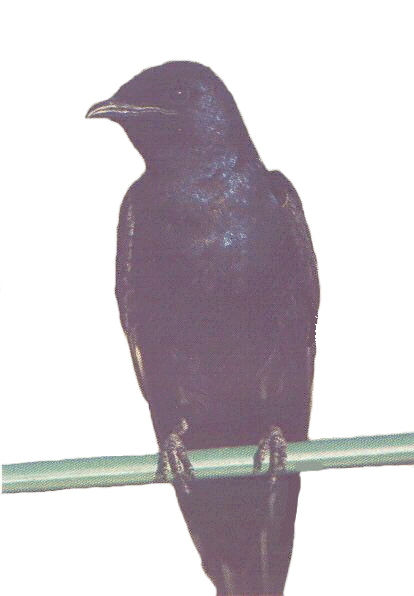
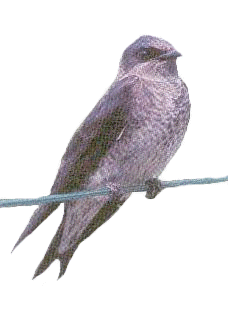
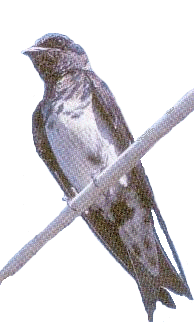
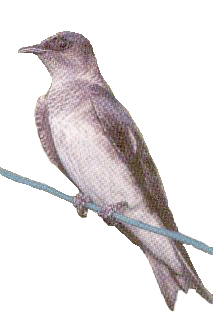
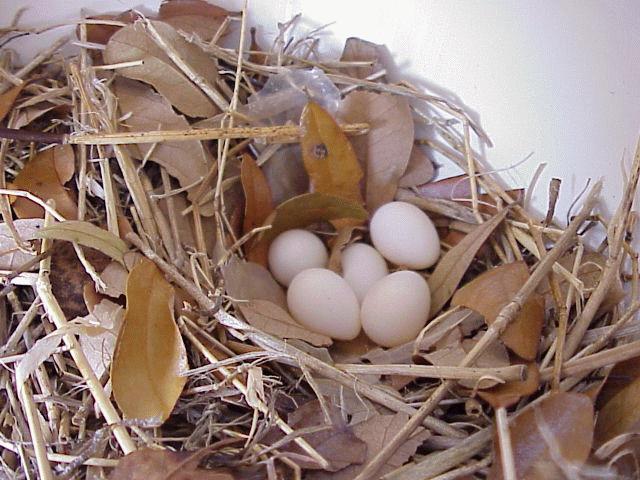
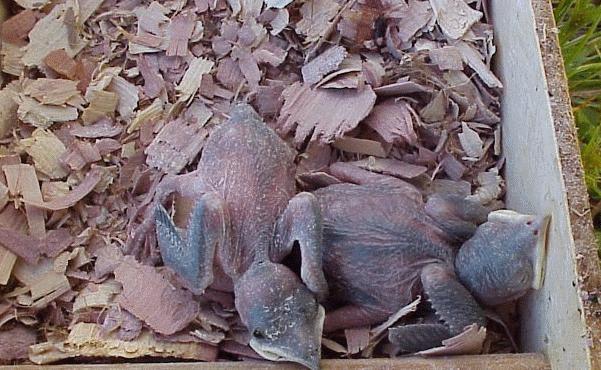
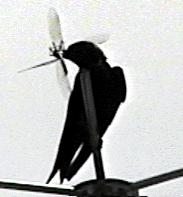


 1999 -
All Rights Reserved
1999 -
All Rights Reserved